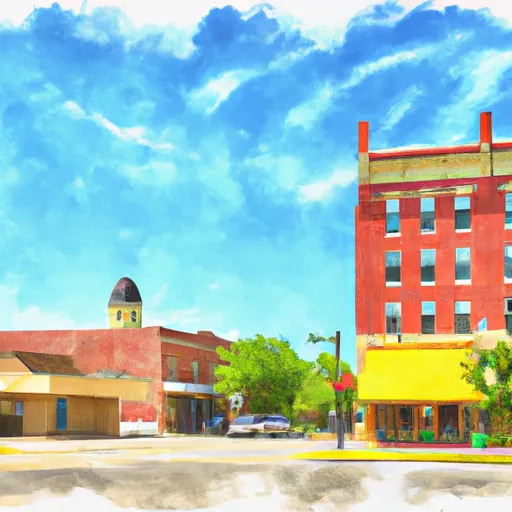-
 Snoflo Premium
Snoflo Premium
Get unlimited access to all our content
With no Ad interruptions! - Start Your Free Trial Login with existing account
Alton
Eden Index
Climate
8.0
•
Recreation
•
Community
•
Safeguard
3.2/10

Alton, Kansas is a small town located in Osborne County. The area experiences a humid subtropical climate with hot summers and cold winters. The hydrology constituents in the area include the South Fork Solomon River and several creeks, providing ample opportunities for fishing and water activities. Outdoor enthusiasts can also explore the nearby Cedar Bluff Reservoir, which offers hiking, camping, and boating opportunities. The town is also known for its annual Alton Chicken Festival, which celebrates the local poultry industry. Overall, Alton offers a unique small-town experience with plenty of outdoor recreation opportunities.
What is the Eden Index?
The Snoflo Eden Index serves as a comprehensive rating system for regions, evaluating their desirability through a holistic assessment of climate health, outdoor recreation opportunities, and natural disaster risk, acknowledging the profound impact of these factors on livability and well-being.
Climate Health Indicator (CHI): 8.0
Alton receives approximately
674mm of rain per year,
with humidity levels near 82%
and air temperatures averaging around
12°C.
Alton has a plant hardyness factor of
5, meaning
plants and agriculture in this region thrive during a short period during spring and early summer. Most
plants will die off during the colder winter months.
By considering the ideal temperature range, reliable water supplies, clean air, and stable seasonal rain or snowpacks, the Climate Health Indicator (CHI) underscores the significance of a healthy climate as the foundation for quality living.
A healthy climate is paramount for ensuring a high quality of life and livability in a region, fostering both physical well-being and environmental harmony. This can be characterized by ideal temperatures, reliable access to water supplies, clean air, and consistent seasonal rain or snowpacks.
Weather Forecast
Streamflow Conditions
Smoky Hill
Area Rivers
Smoky Hill
Snowpack Depths
Smoky Hill
Reservoir Storage Capacity
Smoky Hill
Groundwater Levels
Recreational Opportunity Index (ROI):
The Recreational Opportunity Index (ROI) recognizes the value of outdoor recreational options, such as parks, hiking trails, camping sites, and fishing spots, while acknowledging that climate plays a pivotal role in ensuring the comfort and consistency of these experiences.
Access to outdoor recreational opportunities, encompassing activities such as parks, hiking, camping, and fishing, is crucial for overall well-being, and the climate plays a pivotal role in enabling and enhancing these experiences, ensuring that individuals can engage in nature-based activities comfortably and consistently.
Camping Areas
| Campground | Campsites | Reservations | Toilets | Showers | Elevation |
|---|---|---|---|---|---|
| Smith Center Roadside Area | None | 1,793 ft | |||
| Fort Kearny State Rec Area | 110 | 2,110 ft | |||
| Bassway Strip State Wildlife Area | None | 2,090 ft | |||
| Windmill State Rec Area | 89 | 2,055 ft | |||
| Camp Pawnee | 12 | 2,028 ft | |||
| South Park Municipal Campground | 6 | 1,850 ft | |||
| Hoisington Park | 12 | 1,836 ft |
Nearby Ski Areas
Catastrophe Safeguard Index (CSI):
The Catastrophe Safeguard Index (CSI) recognizes that natural disaster risk, encompassing floods, fires, hurricanes, and tornadoes, can drastically affect safety and the overall appeal of an area.
The level of natural disaster risk in a region significantly affects safety and the overall livability, with climate change amplifying these risks by potentially increasing the frequency and intensity of events like floods, fires, hurricanes, and tornadoes, thereby posing substantial challenges to community resilience and well-being.
Community Resilience Indicator (CRI):
The Community Resilience Indicator (CRI) recognizes that education, healthcare, and socioeconomics are crucial to the well-being of a region. The CRI acknowledges the profound impact of these elements on residents' overall quality of life. By evaluating educational resources, healthcare accessibility, and economic inclusivity, the index captures the essential aspects that contribute to a thriving community, fostering resident satisfaction, equity, and social cohesion.

